Publications
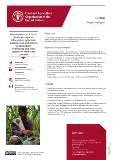
Global: Project Highlights - OSRO/GLO/110/USA
03/2023
The Government of the United States of America contributed USD 6 202 542 to the FAO project entitled “Development of a data-driven geo-spatial information system to analyse risks and shocks to agricultural livelihoods and food systems in food crisis contexts”.
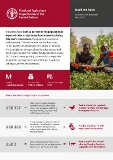
Burkina Faso: Plan de réponse humanitaire 2023
03/2023
Au Burkina Faso, plus de 16 pour cent de la population risque de se retrouver en situation d’insécurité alimentaire aiguë pendant la période de soudure de cette année, si aucune assistance appropriée n’est fournie.

Yemen: Humanitarian Response Plan 2023
03/2023
After eight years of armed conflict, Yemen remains one of the world’s most complex humanitarian crises. More than half of the country’s population, around 17 million people, are acutely food insecure.

Importance of investing in agriculture in emergency contexts
03/2023
With 222 million people experiencing high acute food insecurity across 53 countries, and an alarming food security outlook for 2023, investing in agriculture in emergency contexts has never been so critical.
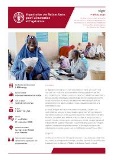
Niger: Profil du projet
03/2023
Améliorer la nutrition, la sécurité alimentaire et la résilience des personnes touchées par la covid-19, les inondations et les conflits dans les régions de Maradi et de Tillabéri

Tchad: DIEM – Données en situations d’urgence. Bulletin de suivi, cycle 4
03/2023
Ce bulletin sur le suivi des Données dans les situations d'urgence (DIEM-Suivi) présente les résultats de la quatrième évaluation réalisée entre décembre 2022 et janvier 2023 au Tchad.
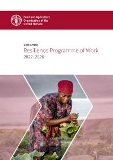
East Africa Resilience Programme of Work 2022–2026
03/2023
In the same spirit as the preceding Resilience Strategy for Eastern Africa 2018-2022, the East Africa Resilience Programme of Work 2022–2026 describes the strategic approach to sustainable resilience building that FAO will follow to build capacity and strengthen FAO Country Offices, Member Nations and regional institutions to analyse, anticipate and respond to shocks and crises.

Niger: Évaluation des dommages et des besoins à la suite des inondations de 2022
03/2023
En 2022, la saison des pluies particulièrement humide a été caractérisée par de fortes précipitations et des inondations dans plusieurs pays d’Afrique de l’Ouest et d’Afrique centrale.
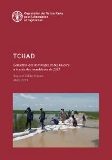
Tchad: Évaluation des dommages et des besoins à la suite des inondations de 2022
03/2023
En 2022, la saison des pluies particulièrement humide a été caractérisée par de fortes précipitations et des inondations dans plusieurs pays d’Afrique de l’Ouest et d’Afrique centrale.
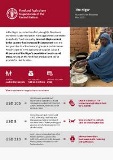
Niger: Humanitarian Response Plan 2023
03/2023
In the Niger, persistent conflict, droughts, floods and increased staple food prices have aggravated vulnerable households’ food insecurity.

Tajikistan: Mitigating the locust spread in Tajikistan and neighbouring countries through Anticipatory Action
03/2023
In March–April 2022, the Republic of Tajikistan witnessed an increase of Moroccan locust infestations in its southern areas, and the infestation threatened the bordering regions of Afghanistan.

Pakistan: Floods response update, February 2023
03/2023
Rural communities of Pakistan were among the hardest hit by the devastating floods of June–August 2022.

Mozambique: Humanitarian Response Plan 2023
03/2023
This document provides an overview of FAO's component of the 2023 Humanitarian Response Plan for Mozambique.
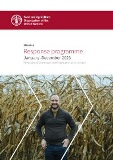
Ukraine: Response programme, January–December 2023
03/2023
The war in Ukraine is significantly impacting food security at the national and global levels. Without urgent support to the Ukrainian agrifood sector, humanitarian needs will continue to rise and the stability of global food value chains will remain under threat.
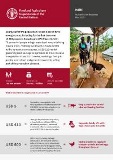
Haiti: Humanitarian Response Plan 2023
03/2023
Nearly half of the population in Haiti doesn’t have enough to eat, including for the first time ever 19 200 people in Catastrophe (IPC Phase 5).
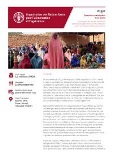
Niger: Transferts monétaires et coupons
02/2023
Sauvegarder les moyens d’existence agricoles des populations vulnérables grâce à la mise en place de filets de protection
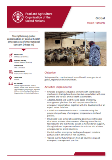
Global: Project Highlights - OSRO/GLO/107/USA
02/2023
The United States of America funded the project OSRO/GLO/107/USA for a total of USD 1.9 million.
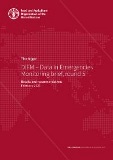
Niger: DIEM – Données en situations d’urgence. Bulletin de suivi, cycle 5
02/2023
Ce bulletin sur le suivi des Données dans les situations d'urgence (DIEM-Suivi) présente les résultats de la cinquième évaluation réalisée en novembre et décembre 2022 au Niger.
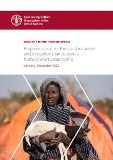
Drought in the Horn of Africa: Progress report on the rapid response and mitigation plan to avert a humanitarian catastrophe (January–December 2022)
02/2023
This progress report details FAO’s work to mitigate the impact of the worst drought in 40 years on food security and livelihoods in the Horn of Africa in 2022.
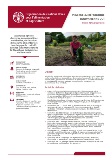
Venezuela (République bolivarienne du): Points forts du projet
02/2023
Au Venezuela (République bolivarienne du), la crise économique et politique a fortement nui à la sécurité alimentaire de la population, principalement les ménages des zones rurales.
